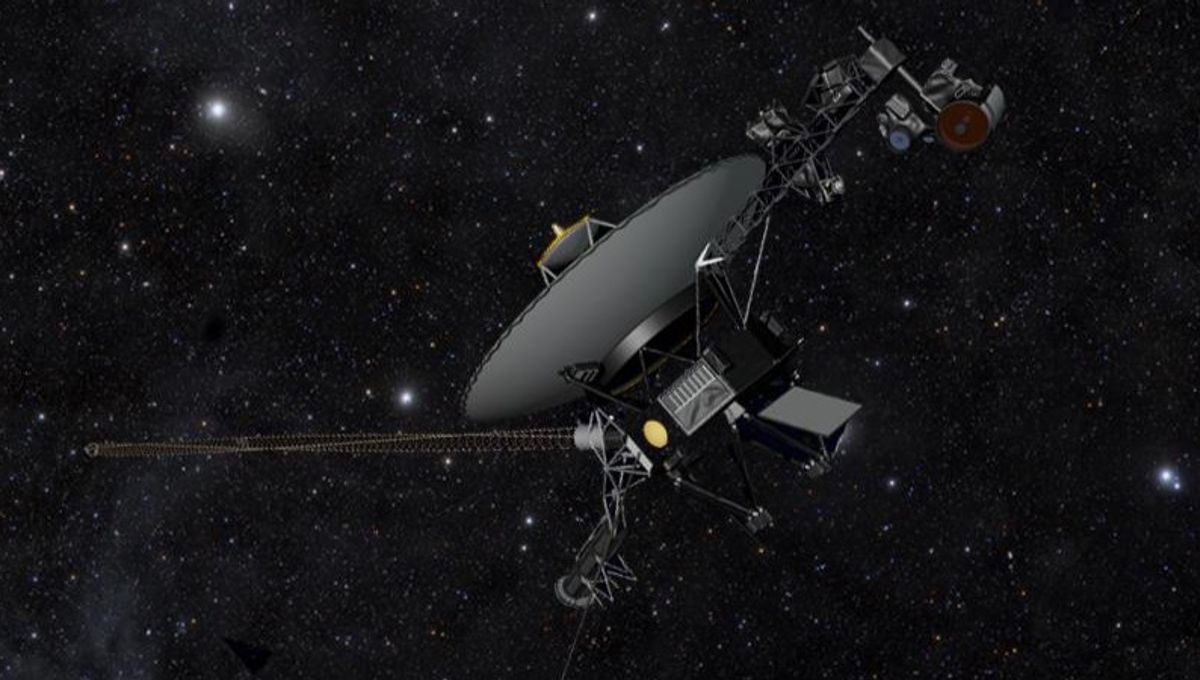
NASA scientists claim to have identified the source of the trouble preventing humanity’s most distant emissary, Voyager 1, from sending back its scientific data. However, finding the problem’s exact location, let alone fixing it, is still proving frustrating. A 45-hour round-trip for messages to get through doesn’t help, nor the fact that only one radio dish, with other calls on its time, is powerful enough for Voyager 1 to hear it over these distances.
Late last year, Voyager 1 started sending back a random series of 1s and 0s instead of the flight data system (FDS) messages that should have been reporting its scientific observations.
“The spacecraft is receiving and executing commands sent from Earth; however, the FDS is not communicating properly with one of the probe’s subsystems, called the telemetry modulation unit (TMU),” a NASA statement reported at the time. “As a result, no science or engineering data is being sent back to Earth.”
Three months after the problems started, with some of the best engineers in the world working on the problem, it’s still happening.
In a certain sort of science fiction film, this would be a hint Voyager 1 had become sentient and had either gone on strike or was asking for help. In the real world, it reflects the fact that one of the most potent scientific instruments of all time runs on a computer system that was obsolete soon after it launched in 1977.
Voyager 1 has three computers. In a testament to Moore’s law, their combined processing power wouldn’t run a smartphone. It would be astonishing if they were still working as well as they are had they been kept in a clean room protected from all sorts of radiation. Instead, they are now exposed to high-energy particles without even the minimal shield of the solar wind.
The FDS takes the data from the spacecraft’s surviving sensors and combines them for sending to Earth through the Telemetry Modulation Unit.
“[The problem’s] likely somewhere in the FDS memory,” Suzanne Dodd, Voyager project manager since 2010, told Ars Technica. “A bit got flipped or corrupted. But without the telemetry, we can’t see where that FDS memory corruption is.”
“It would be the biggest miracle if we get it back,” Dodd added. “We certainly haven’t given up. There are other things we can try. But this is, but far, the most serious since I’ve been project manager.” Nevertheless, the successful restoration of communication with Voyager 2 last year offers hope, albeit from an easier problem.
Those ideas include trying to switch the FDS back to the operating mode it used during its fly-by of the giant planets, in the hope this will reveal where in the memory the problem lies. The usually small Voyager team has pulled in people from other parts of NASA to prepare to do this, but Dodd noted the people they want the most are not available.
“Not to be morose, but a lot of Voyager people are dead,” she noted, leaving the current operators to search through archives that haven’t been kept in the best order. “We have sheets and sheets of schematics that are paper, that are all yellowed on the corners, and all signed in 1974,” Dodd said.
If, in a real-life version of Space Cowboys, any of the surviving former operators have been called out of retirement to fix the problem, NASA hasn’t seized the publicity potential by revealing it.
Dodd bemoaned the lack of a ground-based simulator that can be used to test commands before they are sent to Voyager 1. She also noted the mission’s declining power supply and other fragile parts means it hasn’t got too long. There’s no point taking the rescue attempt too slowly if it means finding the solution just before the mission fails for a different reason.
Despite the weight restrictions when they were launched, the Voyagers had two FDSs each, but Voyager 1’s backup failed in 1981 (fortunately after it had passed Saturn). At the time, most people at NASA thought Voyager 1 had done its job, since, unlike its twin, it would not be passing by any further worlds.
Instead, both Voyagers have mapped the heliopause, studied ultraviolet sources far from interference from the Sun, and investigated magnetic fields so far from the Sun. Two of Voyager 1’s instruments have failed, and five have been turned off by ground control as “no longer priorities”. Four, one less than Voyager 2, are still operational, or at least were prior to the FDS glitching. The magnetometer and cosmic ray system in particular have proven invaluable in the extended mission. They’re probably still collecting data, but need a functioning FDS to return that information to us.
Source Link: NASA Thinks It Knows Why Voyager 1 Is Glitching – But No Fix Yet